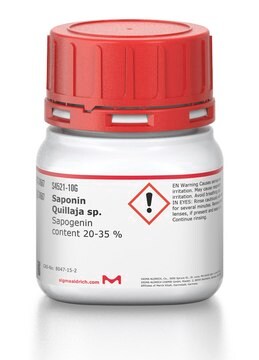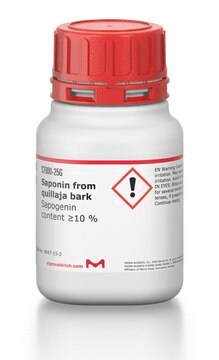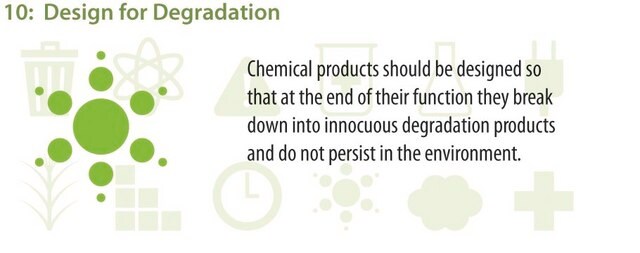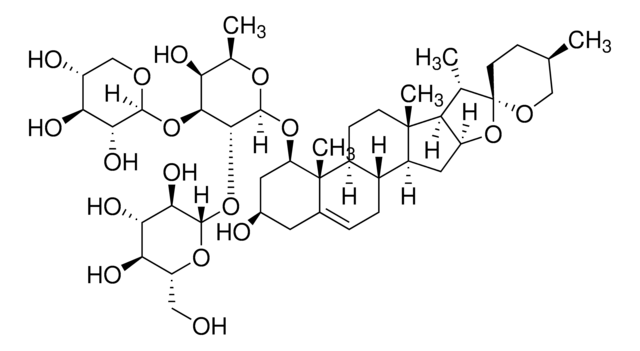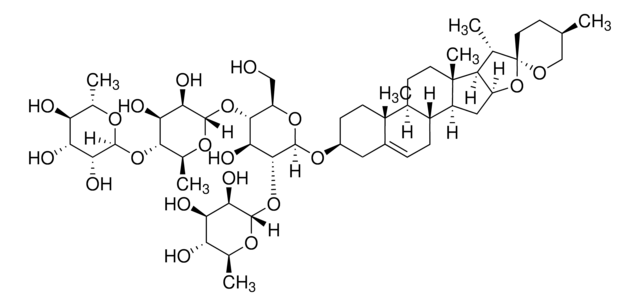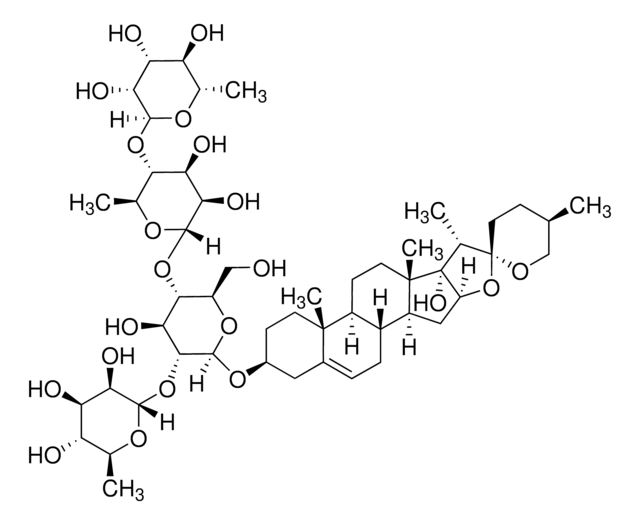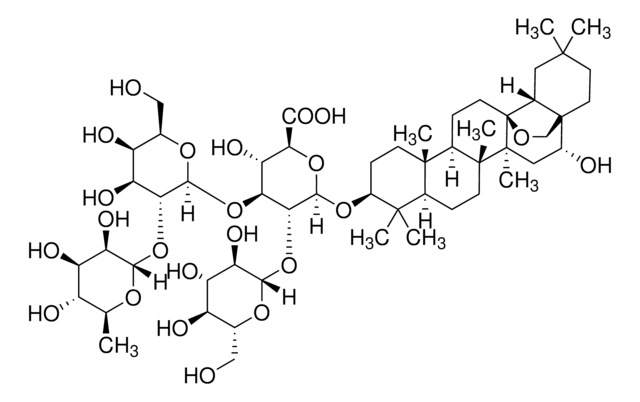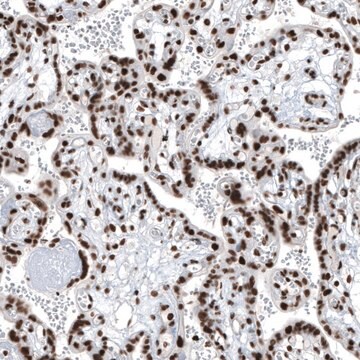84510
Saponin
used as non-ionic surfactant
Synonim(y):
glycosides, saponins
About This Item
Polecane produkty
pochodzenie biologiczne
plant (Quillaya)
Postać
powder
skład
Sapogenin, 8-25%
charakterystyka ekologicznej alternatywy
Less Hazardous Chemical Syntheses
Use of Renewable Feedstocks
Learn more about the Principles of Green Chemistry.
sustainability
Greener Alternative Product
metody
HPLC: suitable
protein quantification: suitable
zanieczyszczenia
≤20% sulphated ash
CMC
0.001-0.01%
rozpuszczalność
water: 1 g/10 mL, clear to hazy, yellow to brown
gęstość
1.015-1.020 g/mL at 20 °C (5% in H2O)(lit.)
kategoria ekologicznej alternatywy
ciąg SMILES
C[C@]1(CCC23COC4([C@H]2C1)CC[C@@H]5[C@]6(CC[C@@H](C(C6CC[C@]5([C@@]4(C[C@H]3O)C)C)(C)C)O[C@H]7[C@@H]([C@H]([C@H](CO7)O[C@H]8[C@@H]([C@H]([C@@H](CO8)O)O)O)O[C@@H]9[C@@H]([C@H]([C@@H]([C@H](O9)CO)O)O)O)O[C@H]1[C@@H]([C@H]([C@@H]([C@H](O1)CO)O)O)O[C@@H]1[C@@H]([C@H]([C@@H]([C@H](O1)CO)O)O)O)C)C=O
InChI
1S/C58H94O27/c1-52(2)29-7-11-55(5)30(8-12-58-31-15-53(3,22-62)13-14-57(31,23-77-58)32(64)16-56(55,58)6)54(29,4)10-9-33(52)82-50-46(85-51-45(40(71)37(68)27(19-61)80-51)84-49-43(74)39(70)36(67)26(18-60)79-49)44(83-48-42(73)38(69)35(66)25(17-59)78-48)28(21-76-50)81-47-41(72)34(65)24(63)20-75-47/h22,24-51,59-61,63-74H,7-21,23H2,1-6H3/t24-,25-,26-,27-,28+,29?,30-,31+,32-,33+,34+,35-,36-,37-,38+,39+,40+,41-,42-,43-,44+,45-,46-,47+,48-,49-,50+,51+,53-,54+,55-,56+,57?,58?/m1/s1
Klucz InChI
MAEBCGDGGATMSC-OSHGGGOQSA-N
Szukasz podobnych produktów? Odwiedź Przewodnik dotyczący porównywania produktów
Opis ogólny
Beyond their structural uniqueness, saponins play essential roles in biochemical processes, acting as secondary metabolites that facilitate protein penetration through cell membranes. Studies indicate their amphipathic nature and potential as hemolytic agents, contributing to their utility in immunoassays by stimulating the Th1 immune response and cytotoxic T-lymphocyte production. In cell biology, saponins find applications as nonionic surfactants, influencing cellular processes and interactions.
Moreover, saponins serve as promising components in vaccine research, functioning as adjuvants that can activate the mammalian immune system. This property, combined with their ability to solubilize low-density lipoproteins and regulate cholesterol concentration in micelles, makes saponins versatile and valuable in multidisciplinary research areas, including biochemical and cell biology research.
Zastosowanie
- as a wetting agent to study its effects on the floatability of six plastics
- to permeabilize washed neutrophils for immunofluorescence
- as a supplement in phosphate buffer saline (PBS) for immunocytochemistry
Działania biochem./fizjol.
Cechy i korzyści
- Suitable for Biochemical and Cell Biology research
- Can be used with HPLC and Protein Quantification
- High purity product for research applications
Inne uwagi
Hasło ostrzegawcze
Warning
Zwroty wskazujące rodzaj zagrożenia
Zwroty wskazujące środki ostrożności
Klasyfikacja zagrożeń
Eye Irrit. 2 - STOT SE 3
Organy docelowe
Respiratory system
Kod klasy składowania
11 - Combustible Solids
Klasa zagrożenia wodnego (WGK)
WGK 2
Temperatura zapłonu (°F)
Not applicable
Temperatura zapłonu (°C)
Not applicable
Środki ochrony indywidualnej
dust mask type N95 (US), Eyeshields, Gloves
Certyfikaty analizy (CoA)
Poszukaj Certyfikaty analizy (CoA), wpisując numer partii/serii produktów. Numery serii i partii można znaleźć na etykiecie produktu po słowach „seria” lub „partia”.
Masz już ten produkt?
Dokumenty związane z niedawno zakupionymi produktami zostały zamieszczone w Bibliotece dokumentów.
Klienci oglądali również te produkty
Nasz zespół naukowców ma doświadczenie we wszystkich obszarach badań, w tym w naukach przyrodniczych, materiałoznawstwie, syntezie chemicznej, chromatografii, analityce i wielu innych dziedzinach.
Skontaktuj się z zespołem ds. pomocy technicznej
